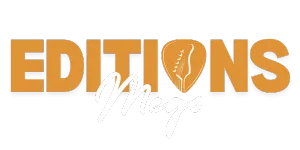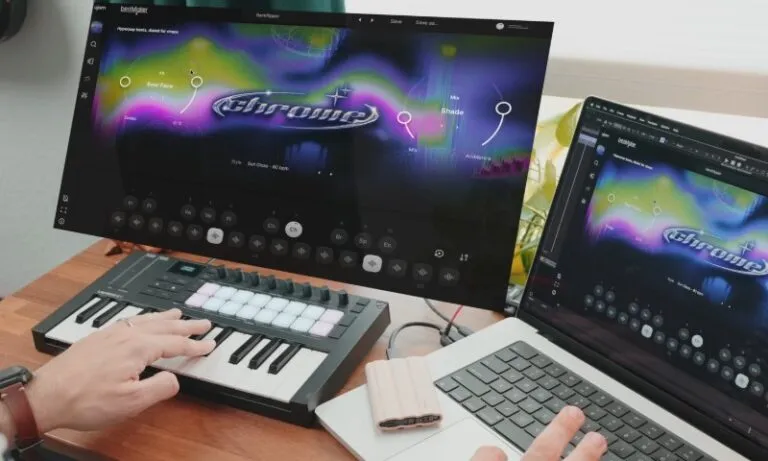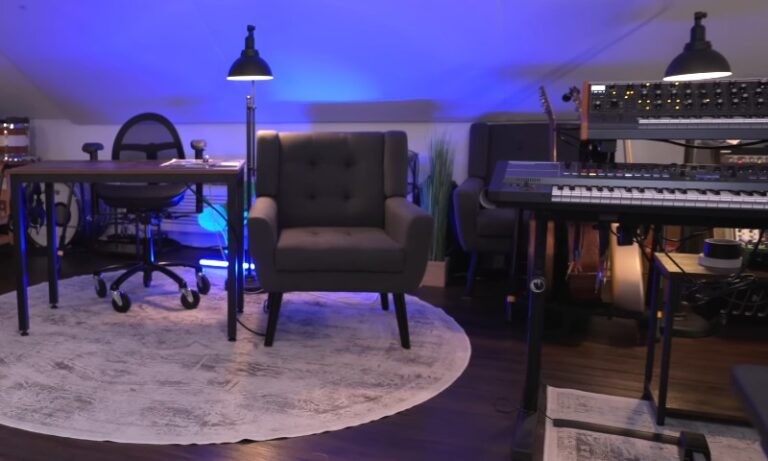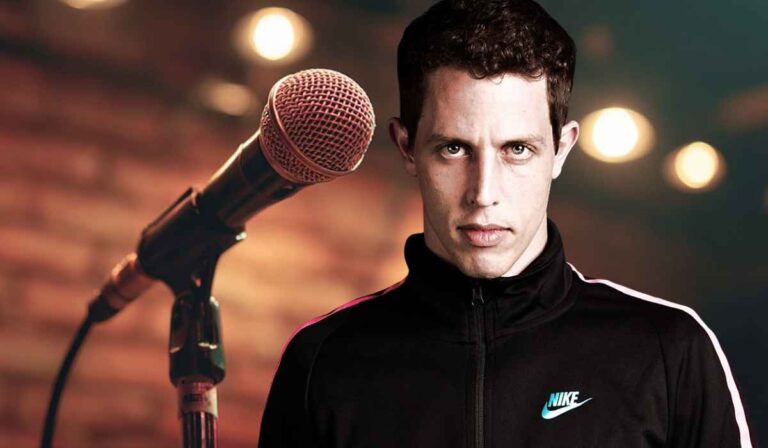Sampling can make a song unforgettable. It can flip an old groove into something brand new, breathe life into a track, or become the signature sound of a generation.
Just think about the Amen break, or that instantly recognizable riff from “Under Pressure.” But once a sample leaves your headphones and ends up in a track you plan to release, you’re not just working with sound anymore. You’re dealing with the law.
And copyright law? It’s not always kind to musicians who skip the paperwork.
So if you’re planning to use a sample, whether it’s a two-second bassline or a chopped-up vocal hook, there are a few things you need to keep in mind if you want to stay out of legal trouble and keep your music on the airwaves. Let’s get into it.
How Copyright Actually Works in Sampling
Music isn’t protected by a single copyright. It’s actually covered by two separate ones, according to the U.S. Copyright office:
- Musical Composition Copyright: This is the melody, the lyrics, the chord progression—everything that would show up on sheet music. Usually owned by the songwriter or a publishing company.
- Sound Recording Copyright: This protects the actual recording—the performance you hear on a record. Typically owned by the artist or their label.
If you’re sampling, you might need to license both of those copyrights.
Let’s say you loop the intro from “Hey Jude.” Even if you never touch the lyrics, you’re still borrowing from the composition and the recording.
That means you’re dealing with Sony Music Publishing for the song itself and Apple Corps for the recording. Skip that step, and you could be risking more than just a takedown notice.

When You Actually Need Permission
If you’re planning to release your track on Spotify, sell it on Bandcamp, upload it to YouTube, or press it on vinyl, then yes, you probably need clearance.
- Anything meant for public distribution
- Anything that might generate revenue
- Anything that uses a sample people can recognize
There are a few exceptions:
- Personal Use: Making beats in your bedroom for fun? No clearance needed.
- Live Shows: If you’re performing live, the venue usually handles rights through a blanket license with performing rights organizations like ASCAP or BMI.
But if you hit “upload” on a commercial release, you should assume you need clearance, even if the sample is only a few seconds long.
Why Fair Use Isn’t Your Free Pass

People throw around the term “fair use” like it’s a shield. It’s not. It’s more of a maybe.
Fair use was designed for education, criticism, parody, and commentary—not for music sampling. Still, courts do consider a few things when deciding if a sample qualifies:
- Purpose and Character: Is it transformative? Did you add something new and meaningful?
- Nature of the Work: Songs are creative works, and those get more protection.
- Amount Used: Shorter is better, but there’s no official cutoff. Two seconds can still get you sued.
- Market Impact: If your track affects the value or sales of the original, fair use probably won’t apply.
No court has ever said “you can sample up to X seconds safely.” That myth about 6 seconds? Not legally real. Just ask Biz Markie.
What About Really Short Samples?
There’s another concept some artists try to use as a defense: de minimis use—basically saying the sample is too small or insignificant to matter.
Sometimes it works. A one-second sound that’s unrecognizable might be safe.
But in Bridgeport Music v. Dimension Films, a two-second guitar chord got N.W.A. in legal hot water. The court said it doesn’t matter how short the sample is—if it’s copied, it’s protected.
So relying on de minimis is rolling the dice, especially in the U.S.
How to Clear a Sample the Right Way

Let’s say you found a groove you love and you’re ready to use it. Here’s how to avoid lawsuits:
Step 1: Find the Rights Holders
- Use databases like ASCAP, BMI, or SESAC to locate the composition’s copyright owner.
- Check the record label or distributor for the master recording.
Step 2: Request Permission
You’ll need two licenses:
| License Type | Rights Holder | Typical Cost | Extra Fees |
| Composition License | Music Publisher | $250–$5,000 upfront | 15–50% of song royalties |
| Master Use License | Record Label | Starts at $1,000 | May include royalty split too |
Some publishers will ask for a flat fee. Others might want a percentage of your royalties. Be ready to negotiate.
Step 3: Sign Agreements
Once terms are set, you’ll sign contracts outlining exactly what you’re allowed to use and how.
Step 4: Keep Everything on File
You might need to prove you have permission later—especially if your track blows up.
Easier (and Cheaper) Alternatives

For those seeking acquiring the right sound for your project, you might find licensing easier and cheaper through production music libraries. If clearing a sample feels overwhelming—or way too expensive—there are a few smart workarounds.
1. Use Pre-Cleared Samples
Platforms like Tracklib offer legally licensed samples with transparent pricing. You know exactly what you’re paying, and the legal work’s already done.
2. Create a Soundalike
You can recreate the vibe of a sample without copying the original. Say you love the horns from a classic soul track—record something similar with a live musician. As long as you’re not copying the melody or performance, you can avoid copyright issues.
Just be careful not to get too close. If it’s clearly meant to mimic the original, you might still get challenged.
What Happens If You Skip Clearance?

Using a sample without permission isn’t just risky—it can be expensive. Here’s what could happen:
1. Lawsuits
You could be sued for copyright infringement.
- Paying profits from your song
- Damages based on lost sales
- Statutory damages up to $150,000 per infringement
Bonus: Read about some of the biggest lawsuits in the music industry that ever happened!
2. Takedowns and Bans
Your track might be pulled from Spotify, YouTube, or other platforms. You could get banned or flagged, making it hard to release future music.
3. Album Recalls
In Grand Upright Music v. Warner Bros., Biz Markie had to pull his entire album after sampling Gilbert O’Sullivan without permission. That case set the tone for how seriously courts take sampling.
How Long Is Music Protected?

Don’t assume a song is “too old to matter.” Copyright sticks around for a long time.
- Compositions: Usually protected for 70 years after the last creator’s death.
- Recordings: Protected for 50 to 70 years, depending on where it was released.
Even if an artist has passed away, the rights might belong to their estate, publisher, or label. You’ll still need clearance unless the work has entered the public domain.
Practical Tips for Artists
Before you hit upload, keep these in mind:
- Use PRO Databases: ASCAP, BMI, SESAC are your go-to sources to find composition owners.
- Reach Out Early: Don’t wait until your song is mixed and mastered.
- Get Everything in Writing: A handshake deal won’t protect you in court.
- Work With a Lawyer: If you’re releasing music commercially, it’s worth consulting an entertainment attorney.
- Explore Legal Sample Libraries: Sites like Tracklib, Splice, and Sounds.com can help you create without legal landmines.
What’s Changing in 2025?
Technology is changing how sampling works—but the laws haven’t caught up yet.
- AI Sampling: There’s growing debate about whether AI-generated remixes and stems count as “new” content or sampled material. So far, no major legal shift has happened.
- Blockchain: Some platforms are experimenting with decentralized databases for faster clearance. But most are still in early stages.
If you’re experimenting with tech-heavy production, keep your eye on new rulings.
Bottom Line
Sampling is an art form, but it lives inside a legal framework. The more your music gets heard, the more eyes (and lawyers) will be on it. So protect yourself. Learn who owns the rights. Clear your samples. If you can’t afford it, look for a soundalike or use something pre-cleared.
Music’s about expression. But when money and rights get involved, it’s also about being smart. You’ve got too much talent to get sidelined by paperwork—or worse, a lawsuit.
Related Posts:
- The Biggest Music Tours to Watch in 2025 - What You…
- 13 Female Guitarists You Need to Know About in 2025
- Guitar Truss Rod Basics - Everything You Need to Know
- Financial Realities of Being a Young Musician - What…
- What Guitar Accessories Do You Actually Need (and…
- Musicians and Their Unexpected Hobbies - 10…












